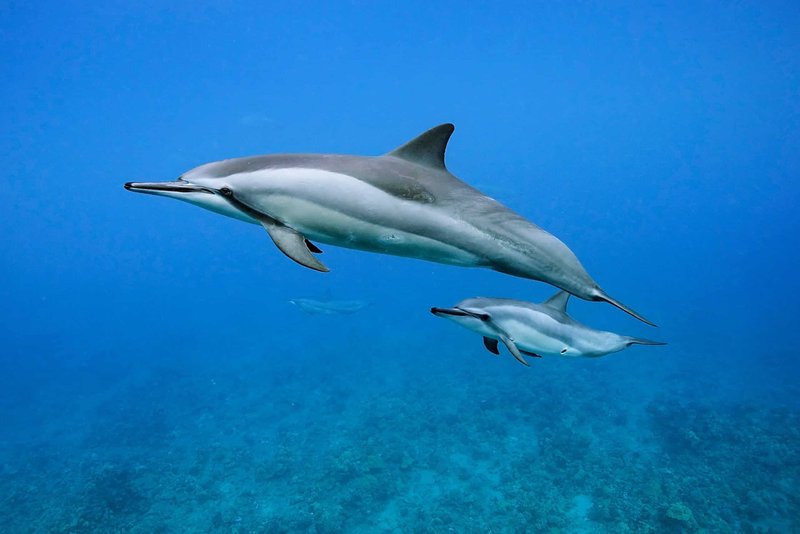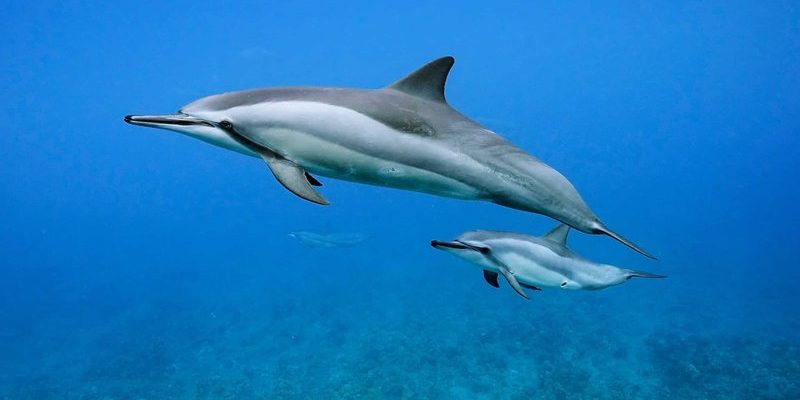
Imagine being in a big, dark room without any lights. You’d need a way to find your way around, right? That’s a little like what the spinner dolphin faces in the vast ocean. They rely not only on their physical abilities but also on their amazing communication skills to move around and connect with others. So, let’s dive into the world of these incredible creatures and learn how they navigate and chat in their underwater home!
Understanding the Spinner Dolphin
The spinner dolphin, or *Stenella longirostris*, is famous for its acrobatic displays. These dolphins inhabit warm, tropical waters around the globe, often found in coastal areas. Unlike some other species, spinner dolphins are quite social and usually travel in pods. A pod can range from a few dolphins to over a hundred!
Their striking bodies are streamlined and built for speed. They’re usually gray with lighter bellies, making them blend in well with the ocean surface when viewed from above while also camouflaging against the ocean depths when seen from below. This natural design helps them evade predators and catch their prey, which primarily consists of fish and squid.
To put it simply, spinner dolphins are like the gymnasts of the sea. When they leap and spin out of the water, they don’t just look cool—they’re also demonstrating their agility and communication skills with their companions.
How Spinner Dolphins Navigate
Navigating the open ocean isn’t easy. Spinner dolphins use a variety of strategies to find their way around their underwater world. One of their key tools is echolocation. This process involves emitting sound waves, which bounce off objects in the water. By listening for the echoes, they can determine the size, shape, and distance of nearby objects, kind of like how a bat finds its way in the dark!
Here’s how it works: when a spinner dolphin clicks or whines, the sound travels through the water. If it hits an object, the sound wave returns to the dolphin’s ears. They’re able to interpret this information quickly, allowing them to navigate smoothly around obstacles or locate prey. It’s a bit like a GPS system, but much more sophisticated and natural!
In addition to echolocation, spinner dolphins also use their keen eyesight. They’re capable of spotting fish and other objects even in murky waters. Combined, these skills help them thrive in their oceanic environment, making them some of the best navigators in the animal kingdom.
The Role of Social Structure
The social structure of spinner dolphins plays a crucial role in their navigation. Pod members often share information, helping one another find the best hunting grounds or safer routes through the ocean. You might picture it like a giant family road trip where everyone has a say in the route taken; their teamwork enhances their chances of survival.
Dolphins use body language, such as subtle movements and postures, to communicate their intentions to each other. For instance, if one dolphin spots a school of fish, it might swim in a particular way to guide the others toward it. This type of collaboration not only aids in navigation but also strengthens their social bonds.
Interestingly, some pods have developed unique behaviors and hunting techniques, tailored to their locations. This cultural aspect adds depth to their navigation habits, showcasing how intelligence and sociality are intertwined in the spinner dolphin’s life.
Communication Methods
When it comes to communication, spinner dolphins are like the chatterboxes of the ocean! They have a rich vocabulary, consisting of clicks, whistles, and even body movements. These sounds help them stay in touch with each other, coordinate movements, and maintain the structure of their pod.
Their calls can convey various messages—from alerting others to danger to expressing excitement about food or play. Here’s the thing: research suggests that spinner dolphins can even recognize individual calls, which allows them to identify specific pod members. It’s almost like having a unique ringtone for each dolphin in the pod!
Visual signals are also a crucial part of their communication. When dolphins leap, spin, or slap their tails on the surface, they’re not just having a good time; they’re sending messages to their friends. These physical expressions can indicate everything from joy to warnings about potential threats.
Challenges in Navigation and Communication
Despite their impressive skills, spinner dolphins face challenges in navigation and communication due to human activities. Noise pollution from boats, industrial activities, and even underwater construction can interfere with their echolocation. Imagine trying to have a conversation in a crowded, loud café—that’s what these dolphins experience!
Also, threats from fishing nets and pollution can impact their natural habitats, making it harder for them to hunt and communicate. Loss of social structures within pods can lead to difficulties in sharing essential survival skills and strategies.
Addressing these challenges is crucial. Conservation efforts aimed at protecting dolphin habitats and reducing noise pollution will help ensure these incredible creatures can thrive in their natural environments.
The Importance of Conservation
Protecting spinner dolphins isn’t just about saving an animal; it’s about maintaining the health of our oceans. Dolphins are indicators of ocean health, and they help keep marine ecosystems balanced. A healthy dolphin population can signify a thriving marine environment.
To support their conservation, it’s essential to reduce pollution, protect their habitats, and promote sustainable fishing practices. You might not be a marine biologist, but even small actions, like reducing plastic use or supporting marine conservation organizations, can contribute to a healthier ocean.
In essence, by caring for spinner dolphins and their environment, we’re also caring for ourselves. Healthy oceans provide food, jobs, and recreational opportunities for people around the world.
Spinner dolphins are more than just acrobats of the sea; they are incredible navigators and communicators, relying on sophisticated skills to thrive in their underwater world. Through echolocation, keen eyesight, and strong social bonds, they navigate the challenges of their environment while maintaining their playful nature.
Understanding how spinner dolphins navigate and communicate not only deepens our appreciation for these remarkable creatures but also highlights the importance of ocean conservation. By protecting their habitats and ensuring cleaner oceans, we help secure a future for these incredible animals. So next time you think about the ocean, remember the spinner dolphin, and how it dances through the waves, guided by its intelligence and social connections. Let’s do our part to keep their world vibrant and flourishing!

